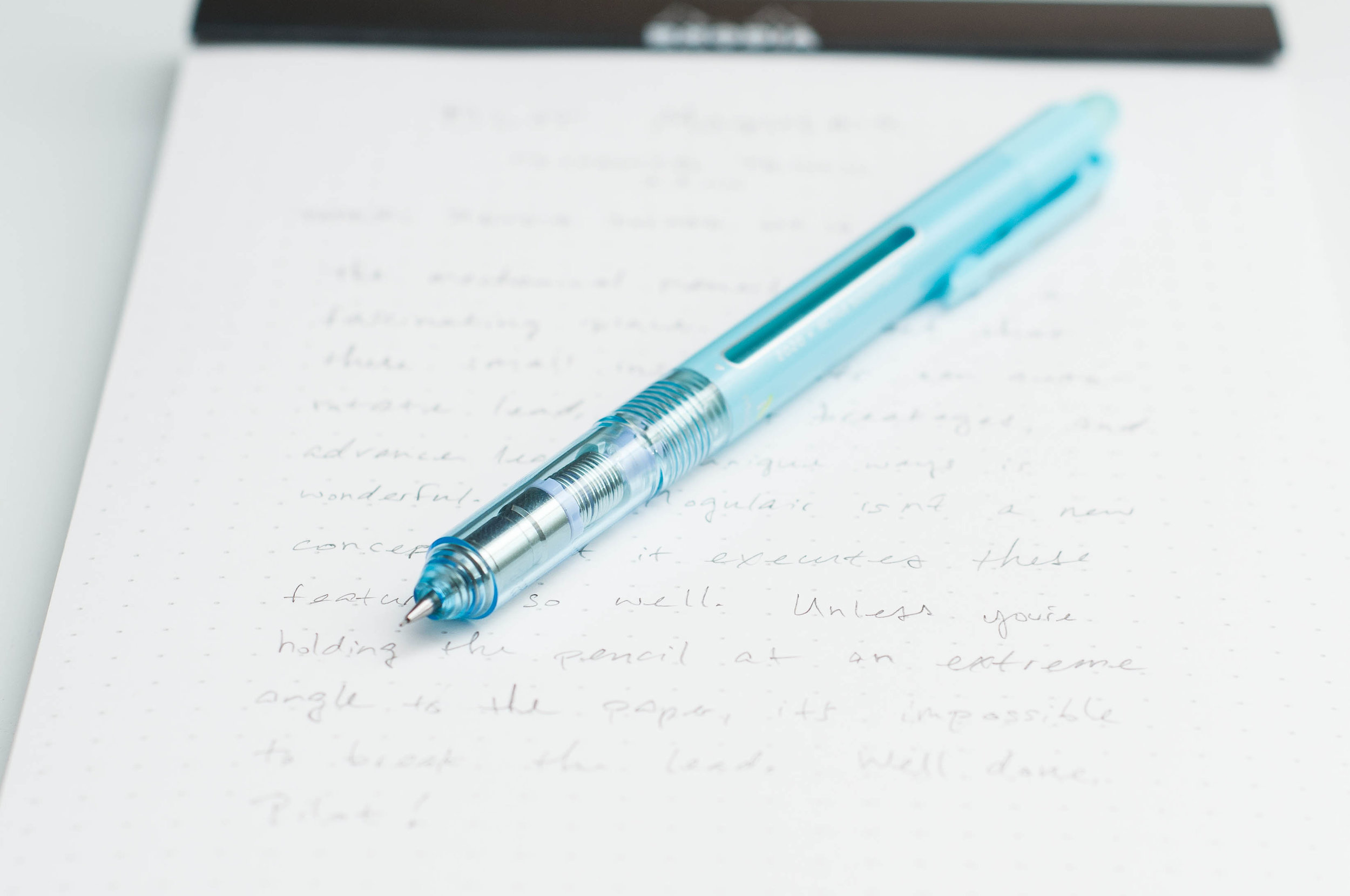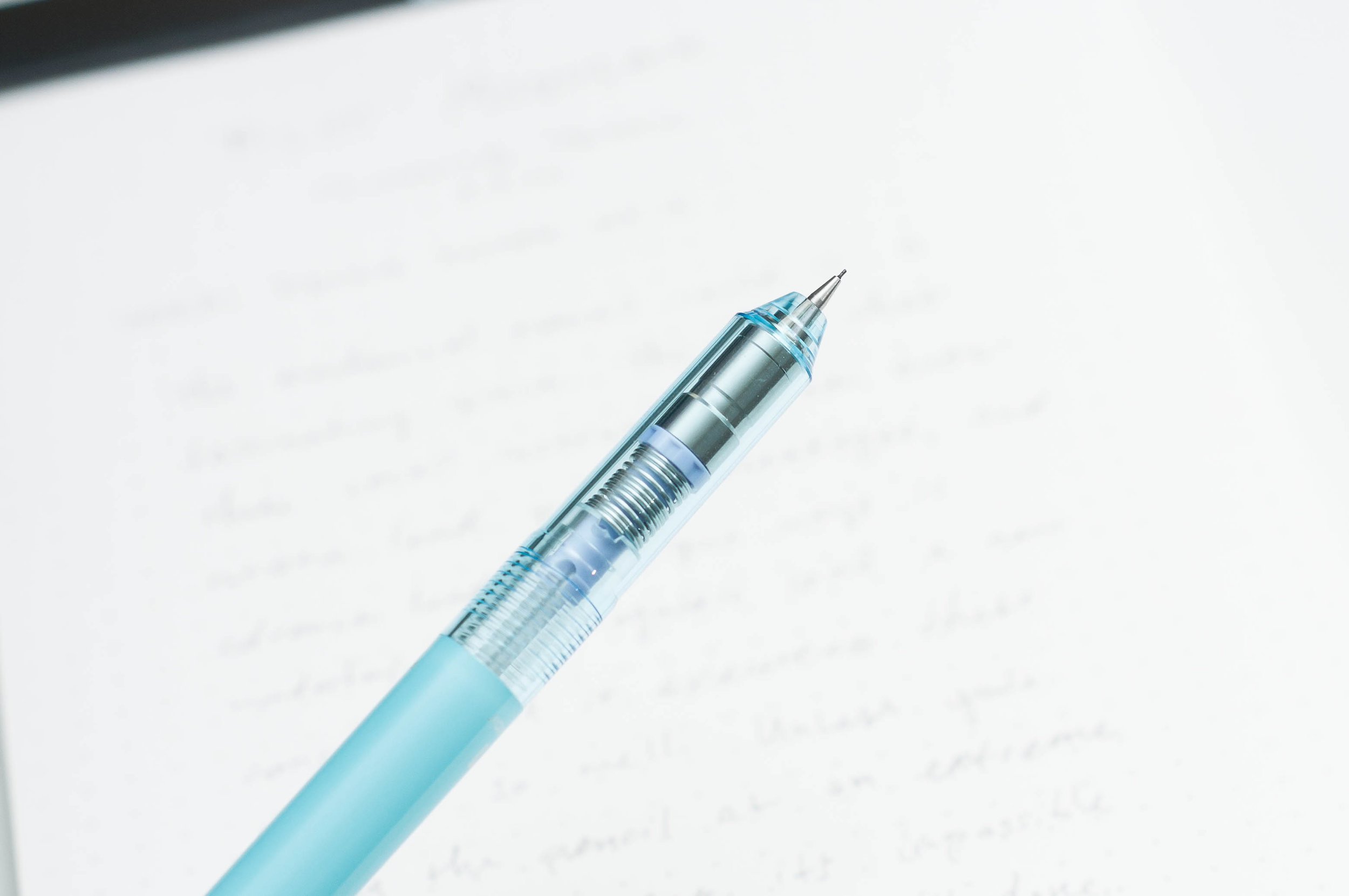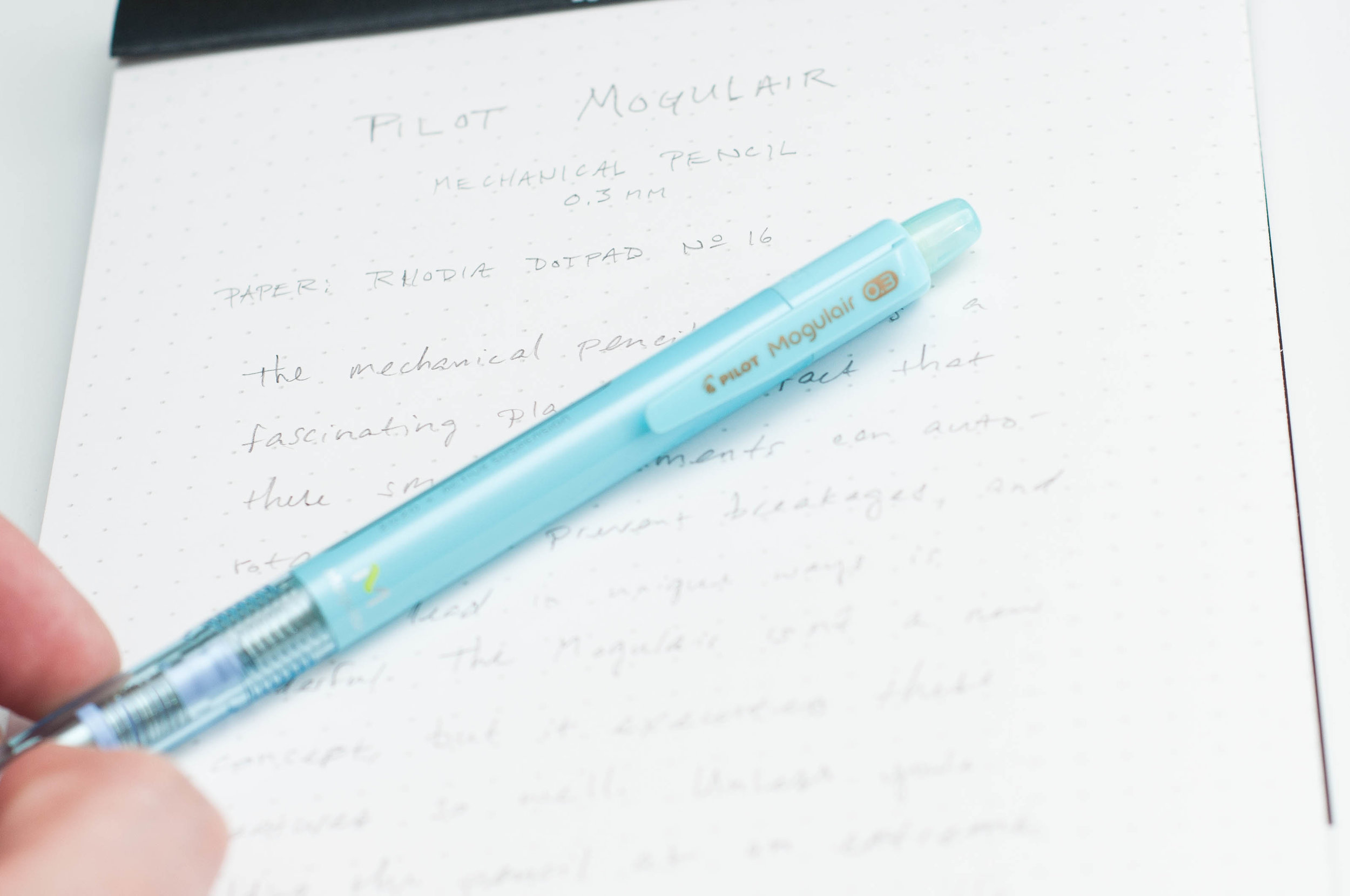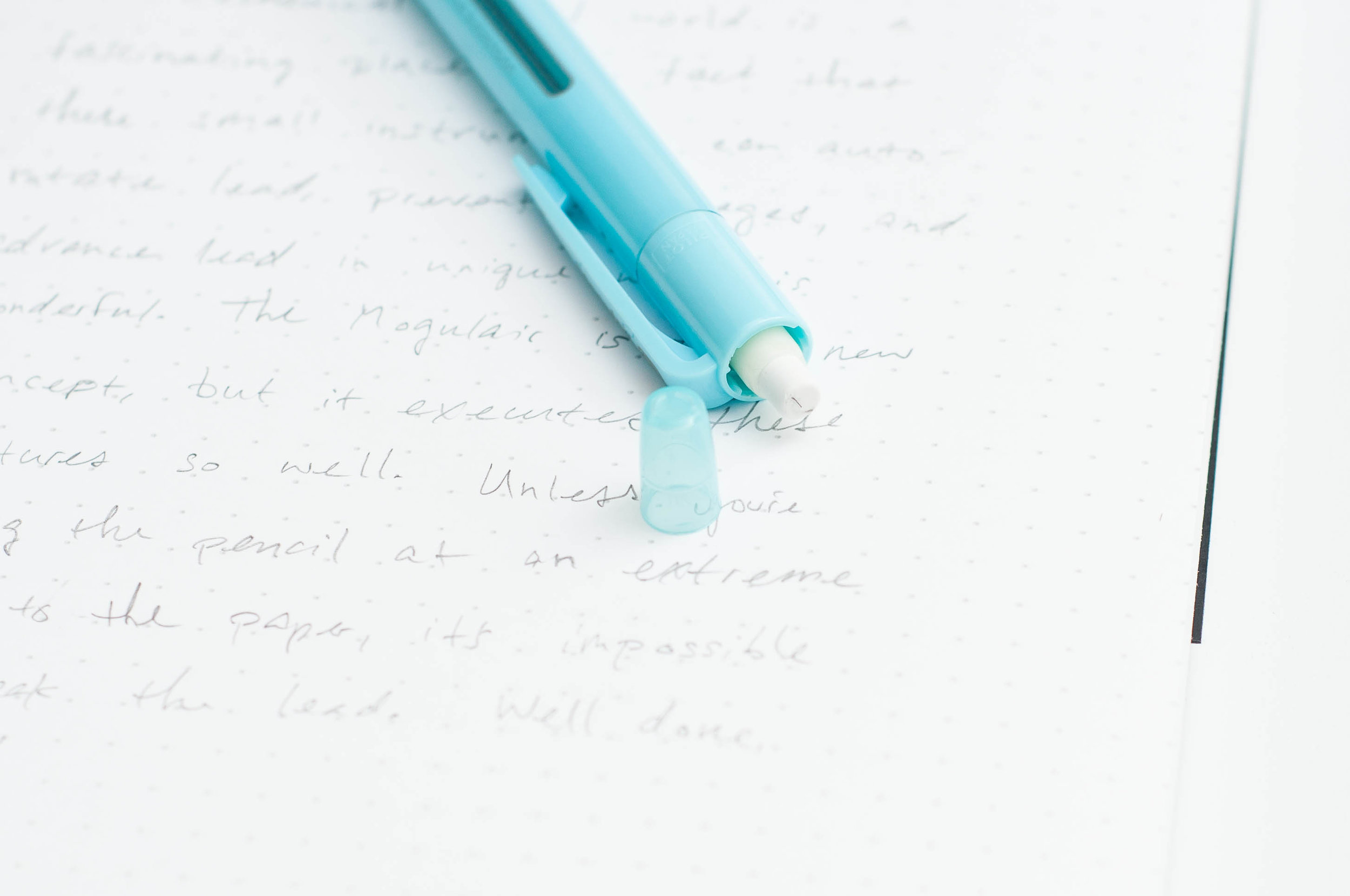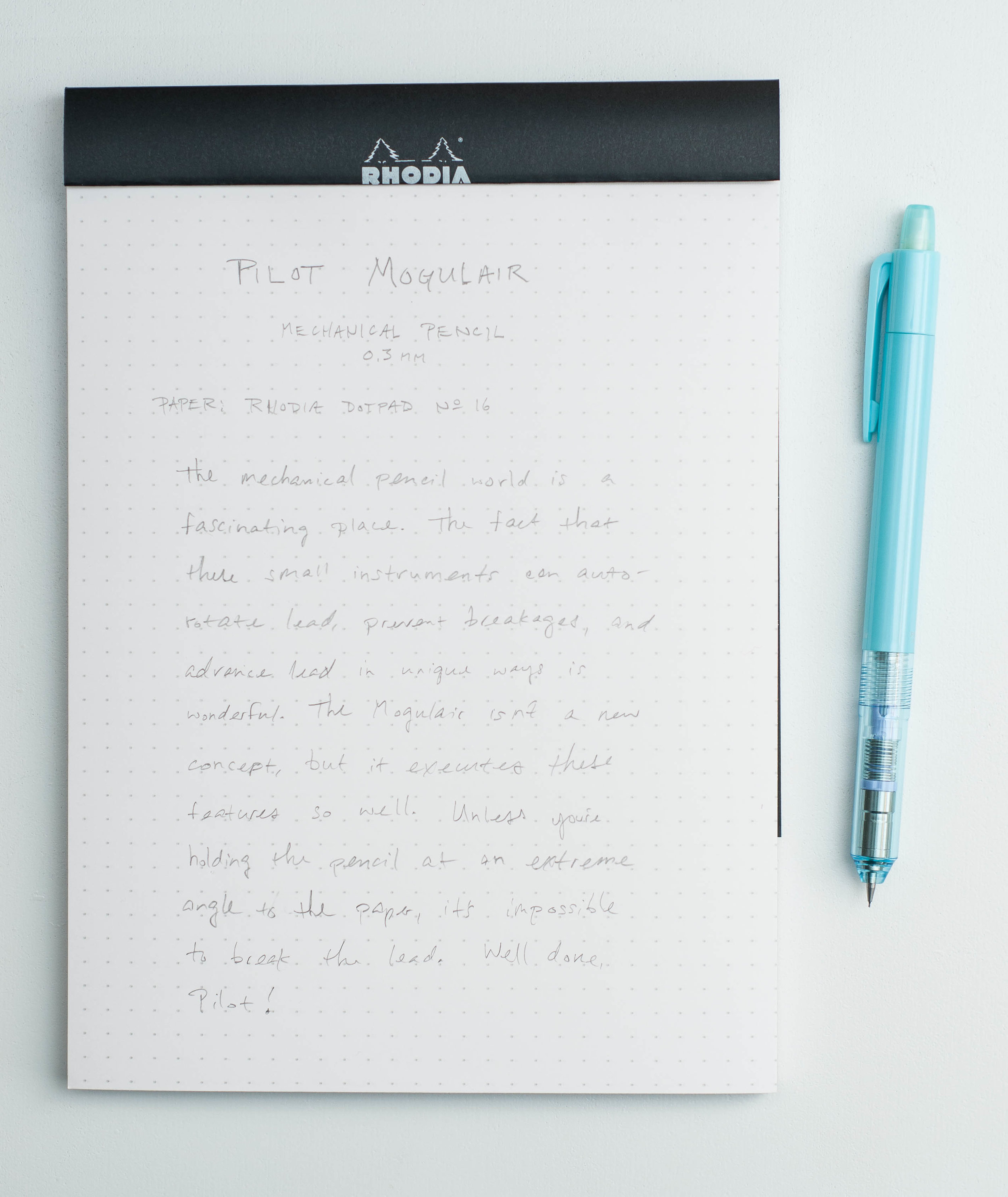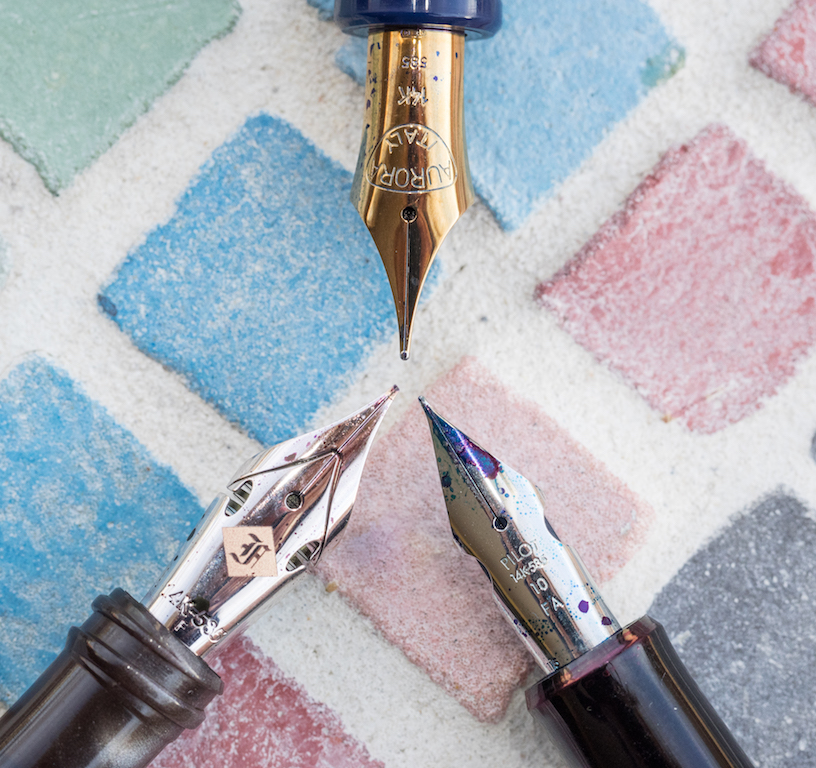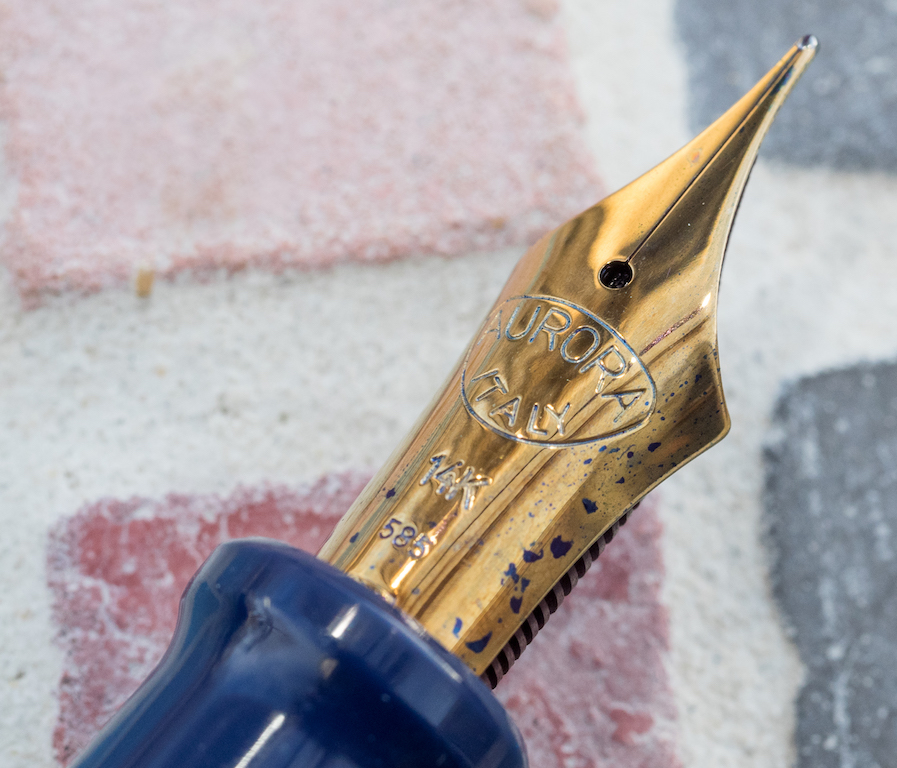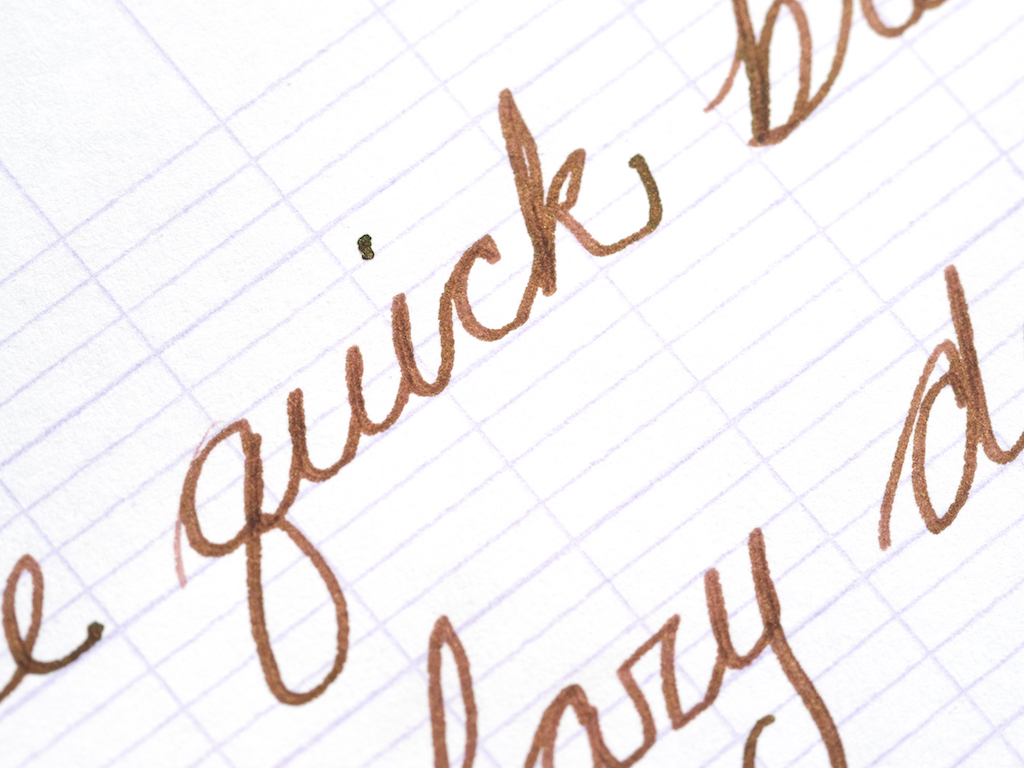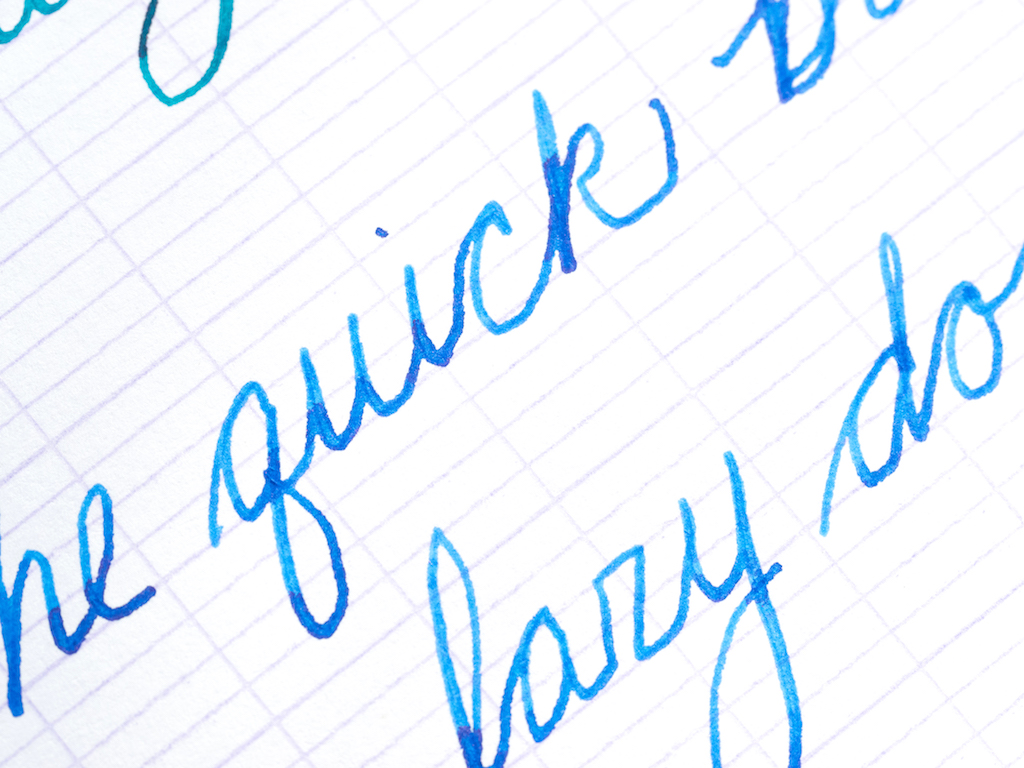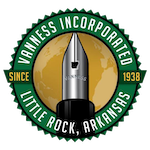At the end of the day, it's still a pencil. Luckily, it handles that aspect with ease. This pencil is comfortable to use for jotting notes or calculations, sketching, writing, and anything else you might need a pencil for. The grip is smooth, but it has plenty of traction for your fingers. Due to all the fancy metal gizmos in the grip section of the pen, there's a nice weight to the pen that's focused in the grip/point area. This gives you more control when making careful lines, but since the rest of the pen is plastic, the overall weight is still fairly low.
The Active Suspension feature of this pen, branding aside, is superb. Basically, if you press down on the lead hard enough, the lead will retract into the protecting pipe to prevent breakage. Several other pencils offer a similar feature (we've written about the Zebra DelGuard several times), but I think the Pilot Mogulair has the smoothest action of the ones I've used. Unless you're writing at an extreme angle to the page, it's unlikely you'll break the lead. It just works!


